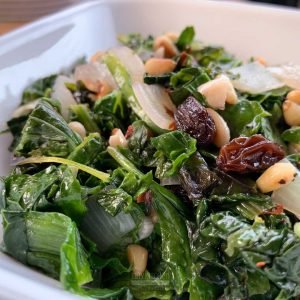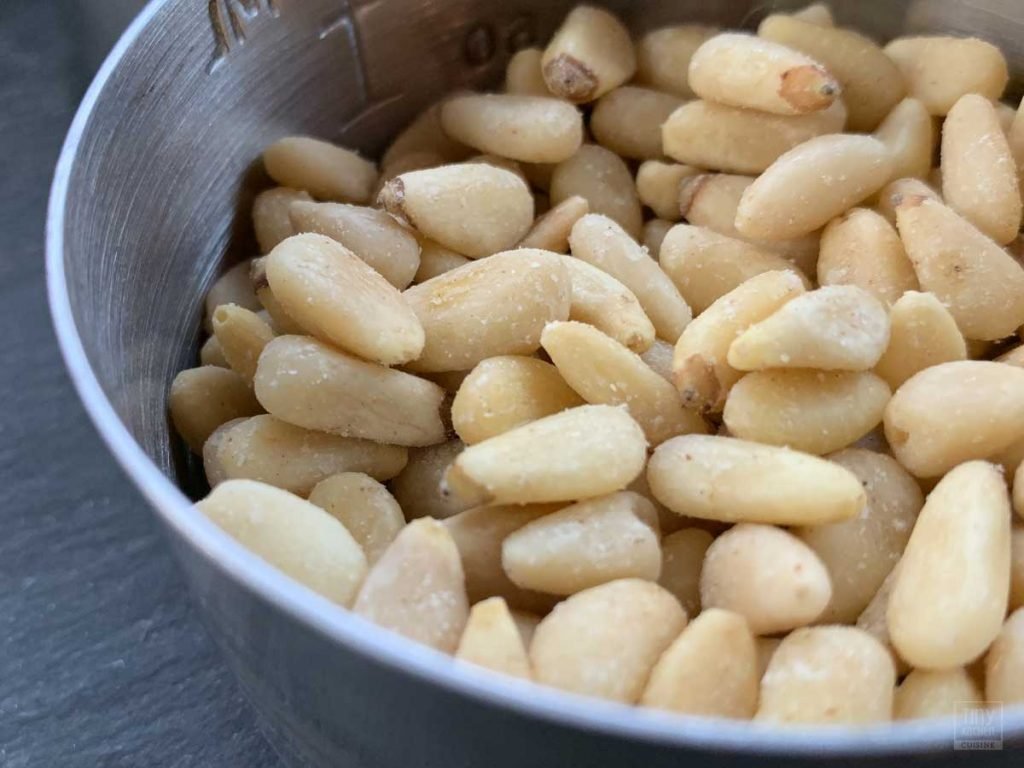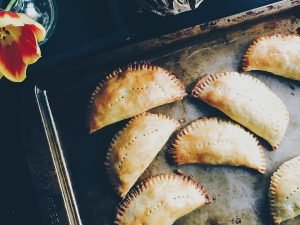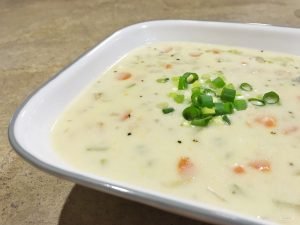Pine nuts! These crunchy little bursts of sweet buttery flavor are some of the most beloved (and expensive) nuts you can get your hands on. They’re about 1/4-inch to a 1/2-inch long, lightly colored, smooth, and oblong. Typically, you toast them lightly before use to bring out the oils and the enhance the texture and flavor. They are an excellent source of manganese, magnesium, healthy fats and antioxidants. However, proper storage is important, as they go rancid quickly.
People have been eating pine nuts since the beginning of recorded history. Also known as pinon nuts, pignoli, or cedar nuts, these nuts are used in recipes from cultures that span the globe. So, if you see any of those names in a recipe, now you know what they’re talking about.
Where do Pine Nuts Come From?
Pine nuts come from pine cones. Obvious, right? But before you go panning for nutty gold in your back yard, there are few things you need to know. All pine trees produce nuts (seeds) inside of their pine cones, but not all of them will produce nuts that are large enough to eat. There are only a few specific species of pine tree that grow large nuts and these trees can only be found in specific regions of North America, Europe, and Asia.
Even after the decades long wait for the trees to grow, you’re still going to need a lot of time and patience. Throughout the spring and summer, pine trees begin to bud and form pine cones. After a long dormancy that lasts through the fall and winter, the cones are finally ready to be harvested. Harvesting happens about two weeks before the green pine cones open. The sun then needs to thoroughly dry the pine cones before they can be smashed open the nuts can be retrieved. But wait, there’s more! There is a second shell that needs to be removed from each nut.
In total, it can takes about between a year and a half all the way up to three years to get pine cones that are suitable for harvesting these delicious nuts. Crazy, right? Between their slow growth and labor-intensive harvesting process, it’s no wonder the can average $30 or more per pound!
A Tree Nut Allergy Means a Pine Nut Allergy
Pine nut allergies are very real. They are often associated with people who have peanut allergies or tree nut allergies. It’s a good thing to keep in mind as triggering these allergies can cause anaphylactic shock. There is also another syndrome that happens called “pine nut mouth” that makes everything you eat taste bitter and slightly metallic for a few days. A lot of people associate this effect with eating raw pine nuts—which is another reason to give them a little toast before you use them.
Substitutes for Pine Nuts
So let’s say you don’t want to use them in your recipes for some reason. You can use cashews, pumpkin seeds, almonds, walnuts, or even sunflower seeds as a substitute. Just make the direct replacement and you’re good to go.
When substituting for another nut, you always want to take into account the other flavors in the recipe. Some nuts will work with certain flavors better than others. My best advice when using substitutions is to just experiment and don’t stop trying new variations until you find what works for you.
How to Store Pine Nuts
This ingredient is very sensitive and go rancid quickly. The first sign that your nuts have gone bad is when they start to smell like used cooking oil. If you’re not sure after smelling then, try eating a few. If they taste bitter, they’re bad.
Fortunately storage is pretty easy. In all cases, you’ll want to put them in an airtight container. In a cool pantry, you can store them for about a week. Keep them in the refrigerator will buy you about 1 to 2 months. If you want to keep you nuts fresh even longer, put them the freezer.
How to Make Toasted Pine Nuts
Toasting is super easy and an important step when preparing them for maximum flavor delivery. There are few ways to go about this, but my preferred method is to use a dry skillet over medium heat. You add the nuts, toss them around, flip them, and about three minutes later you pull them out of the pan and you’re done. Another popular method is to put them on a baking sheet in an oven at 375° for about 5 minutes, flipping halfway through. The reason why I prefer the skillet is because by the time the oven is hot, you could already be done.
The trickiest part to toasting nuts in a skillet is not burning them. The only solution I have for you is: don’t look away. Not even for one minute. When the nuts are just starting to get a slightly brown exterior, remove them from the heat immediately. It’s not very long before they go from brown to black—and burned nuts are not tasty nuts.
Pine Nut Recipes on Tiny.Kitchen








